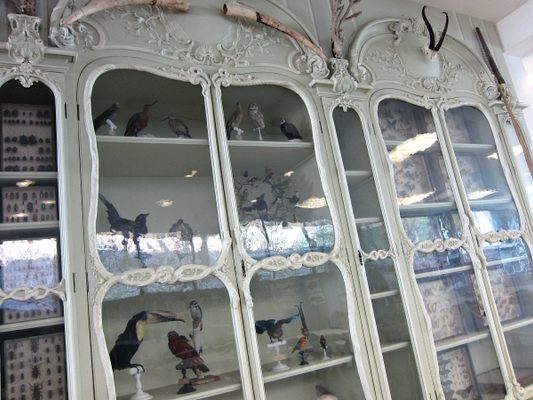About
This row of ornate cabinets filled with natural history specimens is housed in a very modern place: the médiathèque of the Muséum National d'Histoire Naturelle.
After walking through the rather plain hallway to the library of the médiathèque, enter to the left and then walk around to the other side of the dividing wall. Suddenly, there is the beautiful Cabinet de Curiosités de Joseph Bonnier de La Mosson, a part of what was once the most celebrated curiosity cabinet of 18th century Paris.
The aristocrat Joseph Bonnier de La Mosson didn't just inherit an incredible fortune, he also inherited a lavish residence with the Hôtel du Lude on the ritzy Boulevard Saint-Germain. With an intense interest in science, it was there he created his cabinet of curiosity, which encompassed objects related to anatomy, chemistry, physics, mechanical devices, optic machines, fine art, and natural history, many of which he collected on his world travels.
The cabinet was widely visited by likeminded learners and immortalized in a painting by Jacques de Lajoue. Yet when its creator died in 1744 he was destitute. His widow resorted to selling it off in pieces. The carefully carved wooden cabinets, with details of winding reptiles and flourishing flora, that focused on natural history were all purchased by the naturalist Buffon for the Jardin du Roi, which is now the Jardin des Plantes which houses the médiathèque and the complex of natural history museums. Other parts of the collection ended up at the Lycée Alain-Fournier.
The cabinets were declared historic monuments in 1979 and were restored between 1985 and 1994. Although their location is unusual, here they are viewable to anyone with a touch of Joseph Bonnier de La Mosson's curiosity who wants to stop by.
Related Tags
Published
May 26, 2013


































